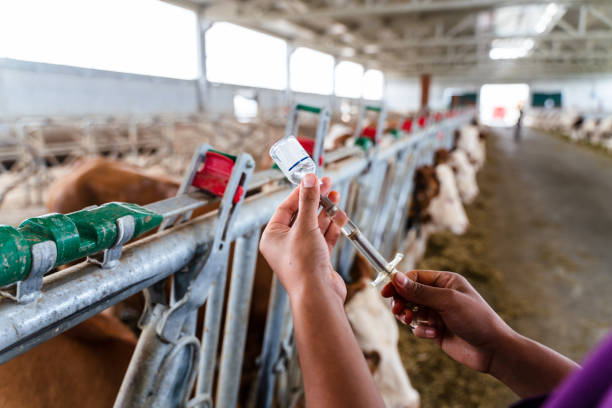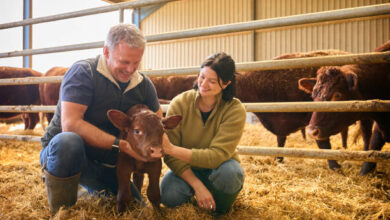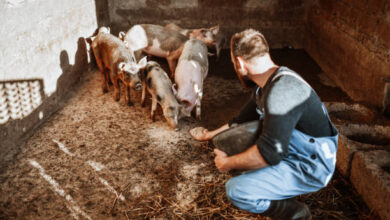
Diseases of Farm Animals and How to Prevent Them
Farm animals are an essential part of agriculture, providing food, labor, and economic stability. However, the health of these animals is crucial for maintaining productivity and preventing significant economic losses. Understanding common diseases of farm animals, their symptoms, and prevention methods is vital for farmers and veterinarians alike.
Overview of Common Diseases in Farm Animals
Common livestock diseases can have severe impacts on animal health and farm productivity. Early detection and treatment are crucial to mitigate these effects. Some of the most prevalent diseases include Foot-and-Mouth Disease, Brucellosis, and Mastitis.
YOU MAY LOVE TO READ
What Is Animalism In Animal Farm: (George Orwell’s Animal Farm)
Are Squirrels Nocturnal Animals? Their Behavior and Habits
What is a Pest in Agriculture? All You Need To Know
Specific Diseases and Their Impact
Foot-and-Mouth Disease
Foot-and-Mouth Disease (FMD) is a highly contagious viral disease affecting cloven-hoofed animals such as cattle, pigs, sheep, and goats.
- Symptoms and Transmission:
FMD causes fever, blisters in the mouth and on the feet, and lameness. It spreads rapidly through direct contact with infected animals, contaminated feed, and equipment.
- Economic and Health Impact:
FMD can lead to severe economic losses due to decreased milk production, weight loss, and mortality. It also results in trade restrictions and culling of infected animals.
- Prevention and Control Measures:
Effective control measures include vaccination, strict biosecurity protocols, and movement restrictions of animals from affected areas.
Brucellosis
Brucellosis is a bacterial infection primarily affecting cattle, swine, goats, and sheep. It is zoonotic, meaning it can be transmitted to humans.
- Causes and Symptoms:
Brucellosis causes reproductive issues such as abortions, infertility, and reduced milk yield. Symptoms in animals include fever, lethargy, and joint pain.
- Effect on Productivity and Reproduction:
The disease significantly impacts animal productivity by causing long-term reproductive problems and decreased milk production.
- Vaccination and Biosecurity Measures:
Vaccination of animals, regular testing, and culling of infected animals are essential for controlling Brucellosis. Implementing biosecurity measures, such as proper sanitation and quarantine of new animals, is also crucial.
Mastitis
Mastitis is an inflammation of the mammary gland, commonly affecting dairy cattle.
- Identification and Symptoms:
Symptoms of mastitis include swelling, heat, redness of the udder, and abnormal milk secretion. It can be caused by bacterial infections, injury, or poor milking practices.
- Treatment and Management:
Treatment involves antibiotics, proper milking hygiene, and ensuring the animal’s comfort. Regular monitoring and maintaining cleanliness are key to managing mastitis.
- Preventive Practices:
Preventive measures include maintaining good udder hygiene, proper milking techniques, and regular health checks.
Preventive Measures and Best Practices
Preventing diseases in farm animals involves adopting good management practices and ensuring regular veterinary care.
- General Farm Hygiene Practices:
Keeping animal housing clean, providing fresh water, and maintaining proper waste disposal methods help prevent disease spread.
- Regular Veterinary Check-Ups:
Regular health assessments by a veterinarian can help detect diseases early and administer timely treatments.
- Vaccination Schedules and Protocols:
Following a proper vaccination schedule tailored to the specific needs of the livestock can prevent many infectious diseases.
- Nutritional Management for Disease Prevention:
Providing a balanced diet with essential nutrients strengthens the animals’ immune systems, making them less susceptible to diseases.
Common Questions On Diseases of Farm Animals
What are the signs of a sick farm animal?
Signs of a sick farm animal include changes in behavior, reduced appetite, fever, lameness, and abnormal discharges. Monitoring animals for these signs is crucial for early disease detection.
How can farmers prevent the spread of disease among livestock?
Farmers can prevent disease spread by maintaining good hygiene, isolating new or sick animals, following vaccination protocols, and ensuring proper nutrition and clean water.
What should be done if an animal shows symptoms of a contagious disease?
If an animal shows symptoms of a contagious disease, it should be isolated immediately to prevent the spread to other animals. A veterinarian should be consulted for diagnosis and treatment.
Conclusion
Maintaining the health of farm animals is essential for ensuring productivity and preventing economic losses. Understanding common diseases, their symptoms, and implementing effective prevention measures can significantly improve the well-being of livestock. By adopting good management practices and regular veterinary care, farmers can safeguard their animals and ensure the sustainability of their farms.
Implement the discussed preventive measures and consult with veterinarians regularly to keep your farm animals healthy and productive. Share your experiences and tips in the comments below!




